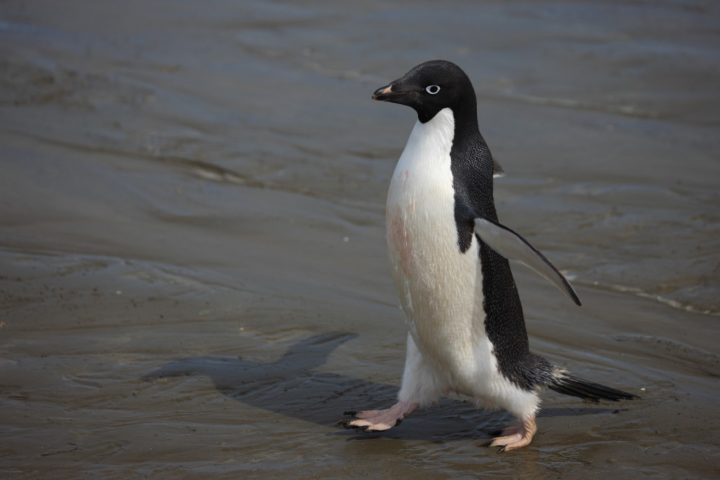A new paper co-authored by a University of Saskatchewan professor chronicles the negative effects of humans on penguins and the Antarctic ecosystem.

The paper shows that sympatric chinstrap penguins have decreased in population size while gentoo penguins have risen in the food chain and increased in numbers.
William Patterson, a geological science professor, said chinstraps have decreased by 30 to 50 per cent in some locations and that the changes are caused by climate change and overfishing.
“At some point, they reach the tipping point where they become endangered,” he said.
“Once you reach that point, in terms of breeding and recovery, it becomes far more difficult to get back over that hump into the safe zone again.”
The warming sea temperatures — up to six degrees in the winter, according to Patterson — means that there is less ice, which affects the food chain. Algae grows underneath the sea ice, which Patterson described as an “upside-down garden.”
Algae is the main food source for krill, a shrimp-like creature on which whales, seals and penguins feed. The reduced amount of ice means there is less krill for the chinstrap penguins to consume.
Krill are the main source of food for chinstrap penguins. They are food specialists, meaning they “use a narrow window of resources and are thought to be highly sensitive to environmental change,” according to the paper. They have not taken to new food sources and the population declined.

Get daily National news
But the gentoos, food generalists, have experienced a population boom — growing by 75 per cent on average and by nearly 600 per cent in some areas. That may be good for gentoos, but it reduces the available food for other species.
The paper compares the two penguin species, which are genetically similar, to better examine how generalists and specialists are affected by climate change.
It concludes that gentoos, which also feed on squid and rock cod, among other things, have risen higher in the food chain while chinstraps have remained in the same position.
“When any organism focuses on a particular lifestyle, a very strict niche, it’s going to be more susceptible to any change that occurs,” Patterson said.
“The more specialized you are, the more likely you’re going to be negatively impacted.”
Patterson said the reduced amount of krill is also because of the legal protections for whales and seals, which has allowed the species to repopulate after being depleted in the 20th century.
The study examined chemical components in the feathers of penguins that had been captured and preserved in museums over the past 90 years. The team charted one specific chemical that increases as a species rises up the food chain. The amount rose in gentoo feathers because they began eating squid and fish, placing them higher in the food chain, as the krill population declined.
Patterson said the penguins are a good example of how climate change affects ecosystems because the southern seas and Antarctica are so vulnerable.
It’s comparable to the Canadian Arctic.
“The Arctic here in Canada,” said Emily Giles, a World Wildlife Fund conservation specialist, “is warming at three times the global rate and a lot of species that live in the arctic are highly specialized.”
Giles is the author of a 2017 WWF Living Planet report which stated that half of the monitored wildlife is in decline.
“There are two big crises going on right now, the climate change crisis and the biodiversity crisis,” she said.
“When we look at biodiversity, we’ve seen declines in wildlife that we’ve never seen before.”
In May a UN report warned that up to a million species of animals and plants were threatened by extinction.
“I think Canada’s ecosystems are perhaps more fragile than people realize, especially perhaps when it comes to climate change,” Giles said.
She said that the southern resident killer whale, which relies on just one food source — like the chinstrap penguin — is in a precarious position.
The killer whales only eat chinook salmon, which are already “in the upper limits” of tolerable ocean temperatures, she said.
Giles said that greenhouse gases need to be limited and natural areas that store carbon, like forests and peat bogs, needs to be protected.
Patterson said there needs to be a limit on the amount of krill that can be fished, but that the situation is getting dire.
“The anticipation is over the next few decades is it’s going to get worse, not better.”










Comments